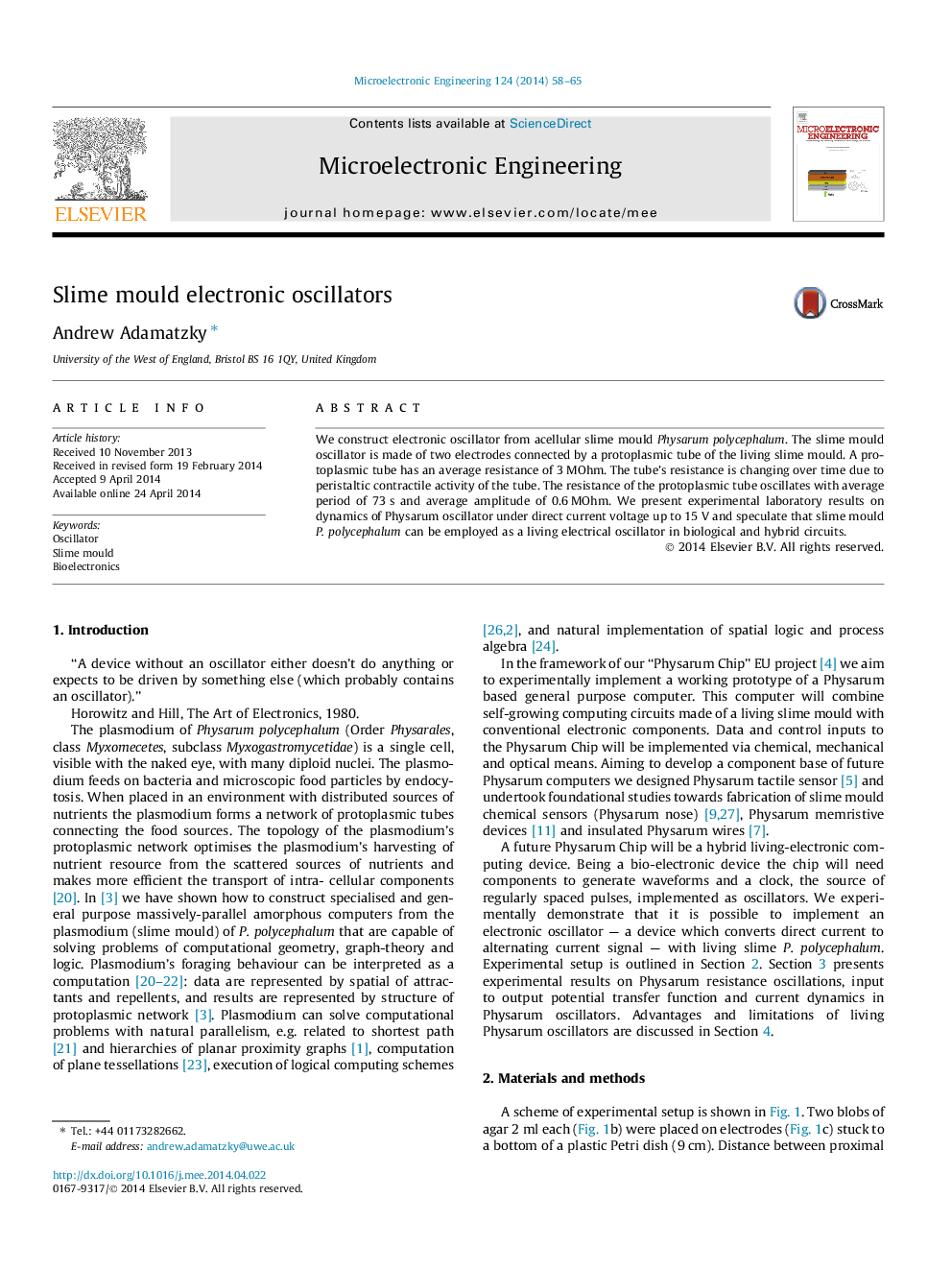| Article ID | Journal | Published Year | Pages | File Type |
|---|---|---|---|---|
| 544214 | Microelectronic Engineering | 2014 | 8 Pages |
•We experimentally implement living electronic oscillator from slime mould.•A protoplasmic tube of the slime mould exhibits oscillations of resistance.•When direct current applied to a protoplasmic tube the tube produces periodic waveforms.•Physarum oscillator is stable, accurate and adjustable.
We construct electronic oscillator from acellular slime mould Physarum polycephalum. The slime mould oscillator is made of two electrodes connected by a protoplasmic tube of the living slime mould. A protoplasmic tube has an average resistance of 3 MOhm. The tube’s resistance is changing over time due to peristaltic contractile activity of the tube. The resistance of the protoplasmic tube oscillates with average period of 73 s and average amplitude of 0.6 MOhm. We present experimental laboratory results on dynamics of Physarum oscillator under direct current voltage up to 15 V and speculate that slime mould P. polycephalum can be employed as a living electrical oscillator in biological and hybrid circuits.
Graphical abstractFigure optionsDownload full-size imageDownload as PowerPoint slide
